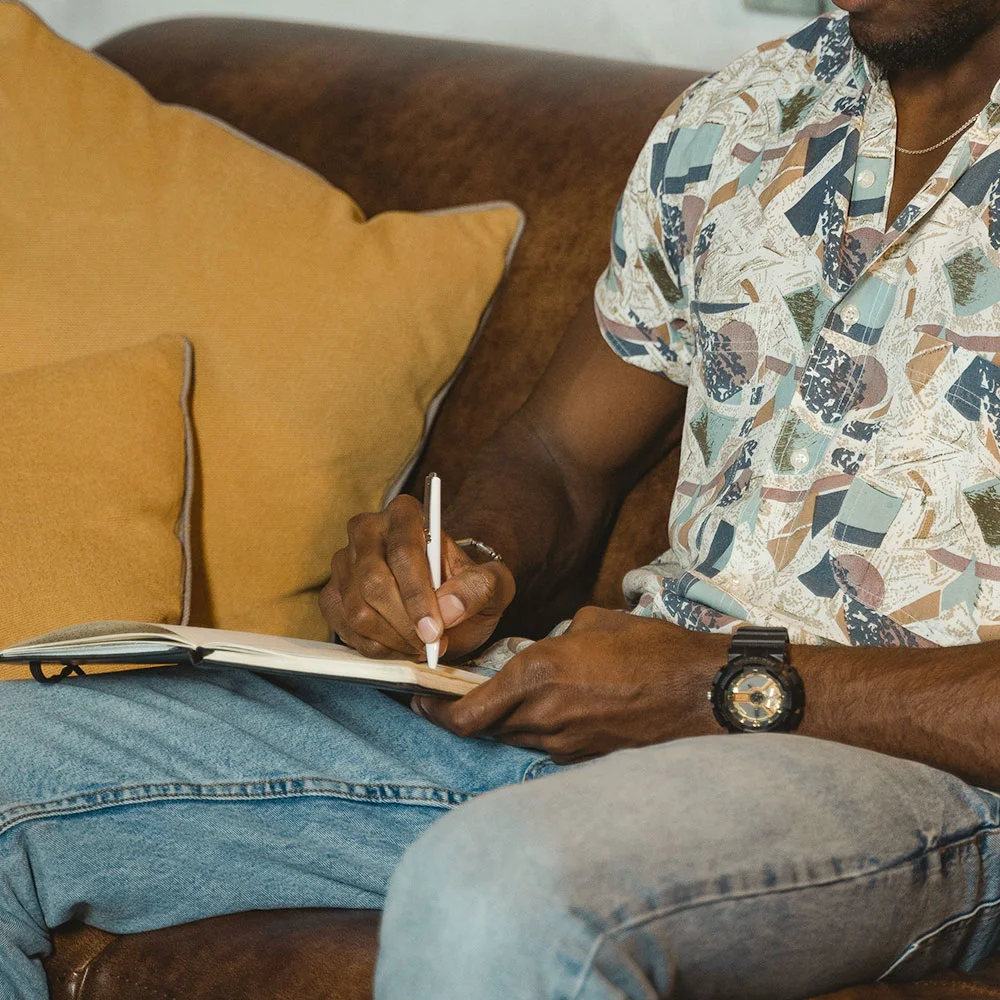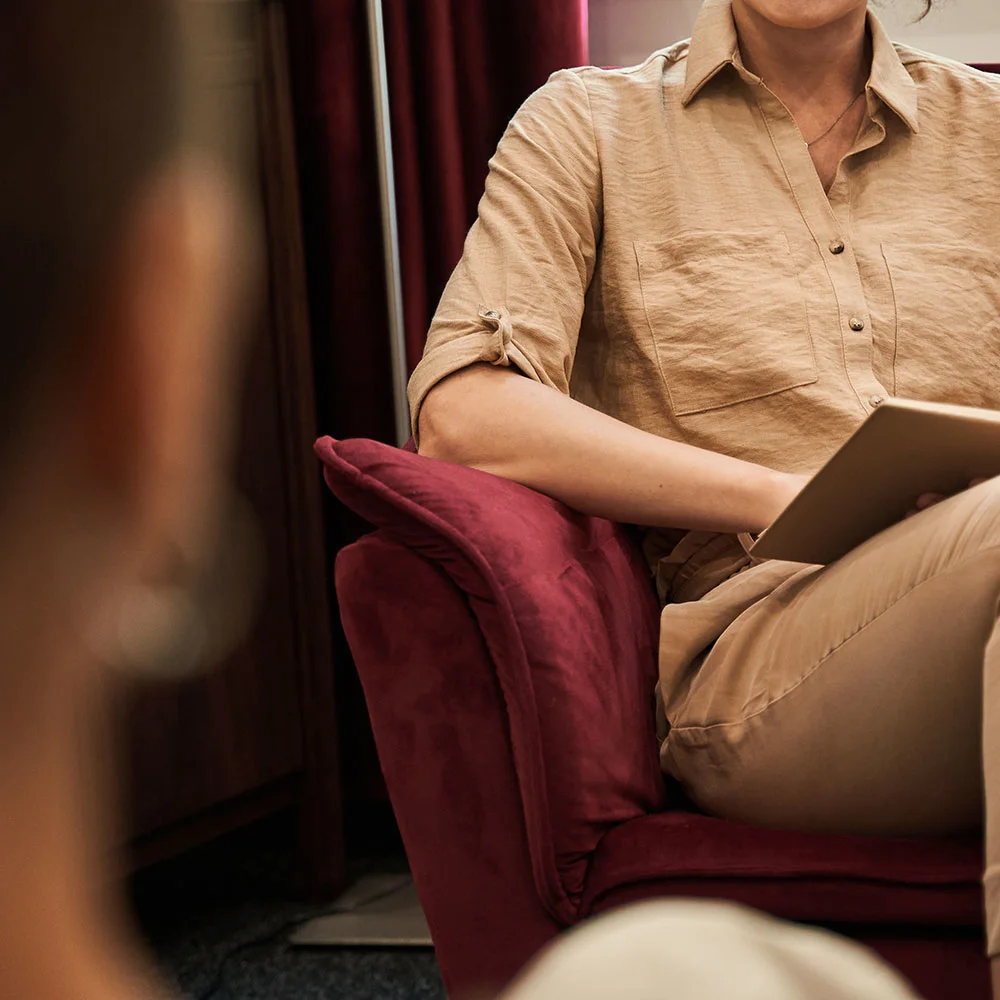Here's what we'll cover
Here's what we'll cover
You might think couples therapy is just for couples on the brink of divorce, but that couldn’t be further from the truth. Every relationship has its ups and downs, and struggles are expected. Attending couples therapy can help you strengthen your relationship and build a healthy foundation—whether during a crisis or before one ever develops.
What is couples therapy?
Couples therapy, sometimes called marriage counseling, is a form of talk therapy or psychotherapy focused on a relationship between two people. The couple’s counselor uses their mental health training and skillset to help the couple develop a deeper connection, work through challenges, support their goals as a couple, and reduce emotional distress (Hewison, 2016).
Couples therapy isn’t reserved just for married couples—people in a variety of relationships can benefit. Also, just because you’re doing therapy as a couple doesn’t mean you’ll both be present for every session. Sometimes it can be helpful to have some individual sessions to help work on personal growth and challenges.
Whether you do couples sessions or individual therapy sessions will be a decision you and your therapist will make together as you develop the most effective therapy plan. Couples therapy sessions are led by trained mental health professionals such as:
Family therapist
Couples therapist
Psychologist
Psychotherapist
Licensed professional counselor (LPC)
Licensed marriage counselor or licensed marriage and family therapist (LMFT)
Social worker
How does couples therapy work?
Couples therapy helps couples build a deeper connection with their partner through:
Better communication skills
Conflict resolution
Establishing boundaries
Developing a better understanding of each other’s feelings and needs
Identifying how each person best expresses and receives love
During a couples counseling session, your couples or family therapist will lead discussions about challenges in your relationship. The therapist isn’t there to take sides or find a winner for an argument. Instead, they will ask questions to help couples communicate in a healthy, honest way to understand each other’s perspectives better.
Your therapist may assign exercises to practice between sessions. Relationships take time and effort, so practicing these skills between sessions may help enhance your relationship.
The skills you learn in therapy sessions can help resolve conflicts and develop skills to handle future challenges better.
Types of couples therapy
There are several different methods your couples therapist may use to enhance your relationship with your partner, including:
Gottman method
Psychologists (and spouses) John and Julia Gottman developed and researched the effectiveness of the Gottman Method for Healthy Relationships. They’ve studied the components of healthy relationships and developed methods to build stronger relationships.
During Gottman therapy sessions, your counselor will:
Learn each partner’s history, relationship philosophy, and relationship goals
Assess your relationship and facilitate discussion on topics where the partners disagree
Teach the couple about the components of a healthy relationship
Direct focus on what brought you together
Practice the skills for building a good relationship
Teach communication skills
Develop tools and skills to maintain a healthy relationship after therapy
Emotionally focused therapy
Emotionally focused therapy or emotion-focused therapy (EFT) emphasizes the importance of increasing awareness of your emotions to uncover underlying needs and suppressed feelings. This therapeutic approach assesses how these feelings are affecting the quality of your relationships.
The therapist then helps couples build skills to meet these emotional needs to establish a deeper connection and healthier relationship.
Premarital counseling
Premarital counseling is a type of couples therapy that helps couples prepare for a healthy marriage. It helps ensure couples have a good foundation of communication and conflict resolution skills to work through challenges that come up during the marriage.
Most couples wait until there is a crisis in the relationship to attend couples therapy, but types of therapy like premarital therapy can help establish the skills for a healthy relationship before large conflicts ever have the chance to develop.
Narrative therapy
Narrative therapy techniques help people understand and explore the stories they tell themselves about their lives, relationships, beliefs, and past experiences. These stories are not just a result of how you feel about these aspects of your life; they also influence how you continue to feel about them. Once the narrative has been identified, your couples therapist can help identify new ways of looking at the situation to challenge unhealthy beliefs.
Imago relationship therapy
Imago relationship therapy focuses on reimagining conflicts as an opportunity to grow and increase compassion in relationships. The three steps of Imago therapy techniques are:
Mirroring: Repeating what your partner said to clarify your understanding. It’s important to mirror without judgment or criticism of what the other person said.
Validation: Attempt to validate what the other person is saying and communicate your understanding of their experience. This step is also an opportunity to receive further clarification.
Empathy: During this stage, one person has the opportunity to express what they think the other person might be feeling. This stage helps build the connection by gaining insight into the other person’s emotions.
8 couples therapy techniques you can try at home
Try these couple therapy techniques at home to start building and improving your connection with your partner:
1. Reflective listening
Reflective listening is a communication strategy with two main steps:
Actively listen to your partner’s explanation and side of the story without interruption.
Reflect the idea back to your partner to confirm you correctly understand the idea.
This listening strategy can help your partner feel more understood and reduce misunderstandings in your relationship. Try to avoid sounding accusatory when reflecting. Instead of “you did X,” try to reflect with phrases like:
It sounds like you’re saying...
It feels as though…
Let me ensure I understand correctly. What I hear you saying is…
2. Express appreciation
Communicating your gratitude and appreciation for your partner can help strengthen your relationship together. Talking about what you are grateful for helps your partner understand what you appreciate and helps you focus on positive aspects of your relationship.
3. Talk about deeper topics
Going deeper than simple small talk helps you better understand your partner. It can be easy in long-term relationships to stop having conversations other than “how was your day” or “what’s for dinner?” Simply setting aside time to talk with each other helps deepen your connection.
4. Discover each other’s love languages
People express and receive love in different ways. Author Gary Chapman, Ph.D. calls these our love languages. Understanding your and your partner’s love languages can increase your ability to meet each other’s needs. The five common love languages, as outlined by Chapman, include:
Giving or receiving gifts
Physical touch
Words of affirmation
Acts of service
Quality time
5. Schedule undistracted time to spend together
Life can get hectic, which makes planning time together important. It can be easy to get distracted with work, chores, kids, and other obligations. Schedule date night and time for meaningful conversations to ensure you’re spending time together. This dedicated time can help you and your partner avoid drifting apart.
6. Do activities together
Trying new activities together or picking up a new hobby provides an opportunity to bond in new ways and practice communication skills. It also provides a chance to simply enjoy each other's company and have fun together.
7. The 6-second kiss
The 6-second kiss is an exercise to add a bit of romance throughout your day. How you perform this exercise is, well, self-explanatory! Practicing the 6-second kiss provides a short break to connect romantically and seamlessly add in a small amount of relationship time within a busy day. This technique can help bridge the gap between scheduled couple time and a hectic lifestyle.
8. Eye gazing
Eye gazing is an exercise where you stare into your partner’s eyes for an extended amount of time. Eye contact is a form of nonverbal communication, and this exercise helps build intimacy.
Benefits of couples therapy
Couples therapy could help to strengthen your relationship. Here are some of the many potential benefits of couples therapy (Garanzi, 2017; Beasley, 2019):
A neutral party helps guide discussions.
It can enhance communication skills.
It’s a safe place to talk about challenging topics.
It helps you identify challenges and rebuild trust.
Your therapist can help you establish healthy boundaries.
You can experience greater satisfaction in your relationship.
What can couples therapy help?
Couples therapy can help you work through challenges you experienced as an individual or as a couple that affect your relationship’s quality. Relationship counseling may help you with:
Overcoming trauma
Increasing emotional and physical intimacy
Rebuilding trust
Solving relationship issues
Increasing conflict resolution skills
Improving a lack of communication
Helping family members bond and other challenges for blended families and step-parenting
Improving challenges and communication to make co-parenting easier after divorce
How to prepare for couples therapy
You don’t have to do anything to prepare for a couples therapy session. Still, these tips may help you feel more comfortable going into your first therapy session:
Come to counseling sessions open to listening and learning about yourself and your partner.
Understand that therapy isn’t to prove anyone right or wrong but to build your connection and find ways to grow together.
Plan sessions during a time with no distractions and turn off all devices before the session begins.
Trust your therapist to guide your sessions. They may ask for your completed exercises between sessions to help your progress.
DISCLAIMER
If you have any medical questions or concerns, please talk to your healthcare provider. The articles on Health Guide are underpinned by peer-reviewed research and information drawn from medical societies and governmental agencies. However, they are not a substitute for professional medical advice, diagnosis, or treatment.
Beasley CC, Ager R. (2019). Emotionally focused couples therapy: a systematic review of its effectiveness over the past 19 Years. Journal Of Evidence-Based Social Work (2019), 1–16. doi: 10.1080/23761407.2018.1563013. Retrieved from https://pubmed.ncbi.nlm.nih.gov/30605013/
Garanzini S, Yee A, Gottman J, Gottman J, Cole C, Preciado M, et al. (2017). Results of Gottman method couples therapy with gay and lesbian couples. Journal of Marital And Family Therapy, 43 (4), 674–684. doi: 10.1111/jmft.12276. Retrieved from https://pubmed.ncbi.nlm.nih.gov/28940625/
Hewison D, Casey P & Mwamba N. (2016). The effectiveness of couple therapy: Clinical outcomes in a naturalistic United Kingdom setting. Psychotherapy (Chicago, Ill.), 53 (4), 377–387. doi: 10.1037/pst0000098. Retrieved from https://pubmed.ncbi.nlm.nih.gov/27918188/












